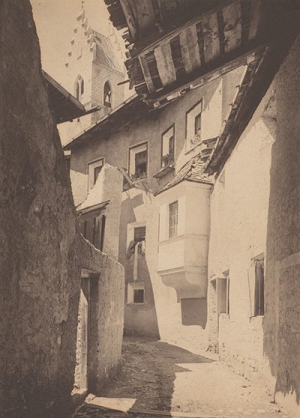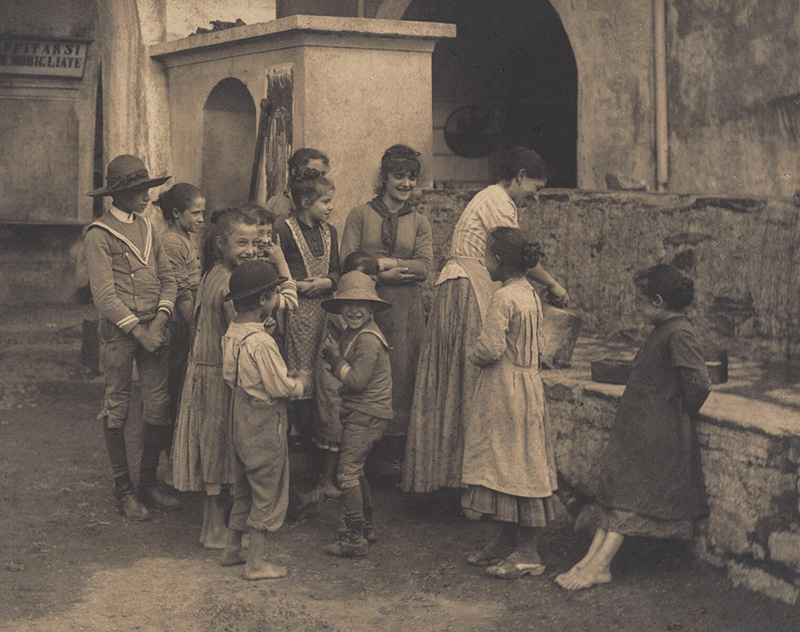Born in Hoboken, New Jersey, in 1864, Alfred Stieglitz began studying photography while a mechanical engineering student in Berlin. His teacher, Professor Hermann Wilhelm Vogel (Key Set number 1), an expert in photographic science and practice, encouraged Stieglitz to investigate the medium’s properties and possibilities by tackling a range of subjects, including landscape, portraiture, architecture, genre studies, and the reproduction of artworks (Key Set number 30).
Deeply influenced by German popular painting of the time—which often focused on picturesque rural scenes of daily life—Stieglitz traveled around Europe from 1886 to 1890 in search of similar subject matter to photograph. Some of his scenes are melodramatic (Key Set number 42) or sentimental (Key Set number 62), but others capture more spontaneous moments (Key Set number 33).

Alfred Stieglitz, A Street in Sterzing, The Tyrol, 1890, platinum print with mercury, National Gallery of Art, Washington, Alfred Stieglitz Collection, 1949.3.64
Key Set number 72
The most innovative works from this period—and those that presage his future development—evince Stieglitz’s nuanced exploration of patterns of light and shade in both interior (Key Set number 60) and exterior settings (Key Set number 72).
Stieglitz moved to New York in 1890, but he returned to Europe for his honeymoon in 1894 a more practiced and directed photographer—and one determined to demonstrate photography’s bona fides as a fine art. His complex composition of a rainy street scene in Paris is suffused with atmosphere and texture (Key Set number 114). His views of Katwijk ennoble the Dutch fishing village’s hardworking people, who, in traditional costume, appear untouched by modernity (Key Set number 212). In Venice, he made several photographs of the canals and their abstractly patterned reflections (Key Set number 152). Stieglitz, a master of printing, initially produced many of these works as lush, large-scale carbon prints and somewhat later as photogravures. Exhibited and reproduced widely, the works from his 1894 trip established Stieglitz as one of the leading photographers of the time.
Despite the success these photographs brought him, Stieglitz later destroyed most of his early European works—likely because their old-fashioned, “painterly” sensibility deviated from the modernist path he later traced for himself. More than three-quarters of the vintage prints in the Key Set made before 1896 likely escaped this fate because they are contained in four bound albums, each titled Sun Prints (1895–1896), which he gave to family members. The Key Set also includes two smaller albums from this early period: Freienwalde a. O. (1886), which chronicles a humorous outing with fellow students, and A Souvenir of Summer (1886), which records a family vacation in Mittenwald, Germany.
Next: Early New York, 1890–1904



